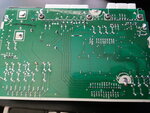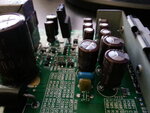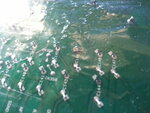Taco Bruh
Newbie level 3
I accidentally touched 2 wires together on a small amplifier and since then it won't turn on. Im sure it's burnt because of the smell but I decided to open it up anyway just to learn a bit from it.
I took a 2 pictures and as you can see there is a burn mark on the bottom of the board but the thing is, looking at the capacitors, the right 2 lined up have a bulge which I assume is bad yet no burn marks or leaks. Where the burn mark is located is the capacitor right beside the bulged ones which seems to look fine and not leaking. Everything else looks good but I was wondering if the burned one is still good even though it has the burn mark under the board. And if it was possible to bring it back to life. Thanks in advance.


I took a 2 pictures and as you can see there is a burn mark on the bottom of the board but the thing is, looking at the capacitors, the right 2 lined up have a bulge which I assume is bad yet no burn marks or leaks. Where the burn mark is located is the capacitor right beside the bulged ones which seems to look fine and not leaking. Everything else looks good but I was wondering if the burned one is still good even though it has the burn mark under the board. And if it was possible to bring it back to life. Thanks in advance.


